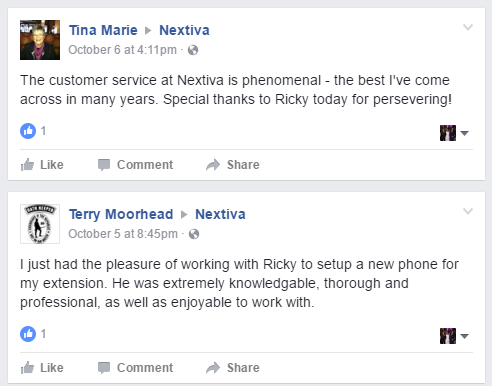Avoiding 3 Common Mistakes in B2B Social Media Marketing
It’s difficult being caught between the “soft” marketing art of social media and the world of hard B2B metrics. That’s where many B2B social media marketers have found themselves, but as social media evolves, it’s coming into its own as a true driver of company revenue.
There are mistakes to be made, though, if you don’t evolve social to its full potential. These mistakes can not only hurt your credibility in the company but also overall respect for social media as well.
Mistake #1. Keeping social media siloed
Social media marketing can be a lot of company and product updates, customer service fielding and not much else — if you let it.
Take the word “social” to heart and reach out to co-workers in other areas to broaden the value social media marketing has — not only for customers but within your company as well. Including other teams in social media efforts will also help internal understanding about its value.
For example, there was a time when the people in positions that like to quantify things in their relation to the bottom line — data teams, CFOs — were seen as the enemy.
Baseline measurements are important, and as social media has evolved, it’s gotten easier to understand how it relates to the bottom line with real, non-“fluffy” numbers to show.
Social media does still tend to require a different way of thinking about measurements and analytics to move beyond fluffy and understand the real-world function. It’s your job to understand and drill down on what the measurements are for your company and audience and connect the dots.
This is probably going to be difficult on your own. Reach out to the data team (if you have one — otherwise you may have to mine the numbers solo) for help on not only what metrics they can help you procure but on understanding what metrics actually mean something within the company.
Connect to other departments to see if social media can help them meet their drivers or value points in some way as well. This will help social media become an integral part of the internal conversation as well as the external.
A great asset of social media is that you can measure not just how well you’re doing but how well your competitors are doing. That is a unique insight that not many other areas of marketing have — use these measures with higher stakeholders to increase your spend within social media.
Also, keep in mind that while fans, followers and conversations are exciting to community managers, the people who control the company purse strings are going to want more.
It’s important to correlate the conversation to business objectives like sales volume, revenue and cost. If there’s a great spike in conversation, go a little deeper — ask what did this do for the organization’s revenue?
When you can answer conversations like that, you’ll raise your own credibility and see more monetary respect for the impact social media can have.
Mistake #2. Hiding yourself behind the company “face”
If your company does have a face, it’s a blank and empty one. There are too many corporate social media accounts that have a generally polite and cordial tone, but no real personality. That tactic isn’t going to lose you any fans, but it’s really not going to gain you any either.
Thinking about it, it’s actually kind of creepy to have all of these people working in one corporate voice. To put it in Game of Thrones terms, it’s like being one of the Faceless Men serving the Many-Faced god. You slip a mask on and off to do your job, and no one is allowed their own identity.
Obviously, there has to be an overall brand identity that any company communication falls within. But consider ways you could open that up to let your customers get a better view.
Being transparent about who is speaking with your customers not only makes customers feel as though you’re being honest and open with them, but it helps establish you and your team as characters within the company’s story.
This year, we had Max Anderson, Video Producer, Nextiva, speak at MarketingSherpa Summit in Las Vegas, and he spoke about how his cloud-based communications company used video marketing to give the company many faces.
Video marketing came about as a tactic in the pursuit of providing the customer “with a level of service they didn’t even know existed,” Max said.
Providing exceptional customer service experience can be difficult, he added, especially when most of the interactions are over the phone, as they are at Nextiva.
“So, the question we asked ourselves was, ‘How can we break the barriers of traditional customer service and provide an experience that would be remembered?’”
Max, and others at Nextiva, create quick video responses to customer questions from a web camera, but they have also expanded to professionally produced videos focusing on topics such as customer success stories, Nextiva culture, how-tos called “Pro Tips” and common customer questions.
The push to record personalized videos started in 2012, according to Anderson, and had that goal of providing an unexpected level of service.
“In today’s digital age, it has become increasingly hard to provide a level of face-to-face interaction, and we have found that our video responses have helped bridge that gap,” he said.
Nextiva often posts these videos on social media if they believe the answers will help other customers, as well as the other videos including customer success stories featuring customers as well as videos that star Nextiva employees and focus on product features and brand culture.
Since opening the account in October 2008, Nextiva’s YouTube channel has:
- 1,426,559 total channel views
- 1,062 subscribers
- Over 200 posted videos
Many of those videos are getting views in the thousands — not exactly what you would expect from product explainer videos.
Mistake #3. Making social media the baby of the family
Too often, social media is cooed over in the corporate world — “oh isn’t that cute!” over this posted GIF and “aw, that’s so darling!” over that Instagram picture.
Social media may have once been a youngster in the marketing world, but it’s a full-grown adult now that’s contributing to the household. Make sure people know it.
Start by putting the right framework into place when organizing social media within your marketing department.
Ask the same questions of social media that you would with any other channel — what are our drivers? Goals? How do we handle any issues that come up?
Develop policies that answer these questions that social media has to stay within, and also consider broader company objectives when doing so.
If you’re publishing content, set parameters to stay within to ensure that all departments are happy — this may mean reaching out with a monthly or quarterly meeting, or simply touching base with a publishing schedule.
Social media can play really well with others if you integrate it correctly — and if you’re clear about the value and actual revenue driving service it provides to the company, others will be too.
You might also like…
Apply to speak at MarketingSherpa Summit 2018
To read about our award-winning campaigns, download the MarketingSherpa Awards Book
Sherpa Summit 2017 Takeaways: The five best B2B tactics for customer-centric marketing
Categories: B2B Marketing b2b, Inbound Marketing, marketing mistakes, social media marketing











